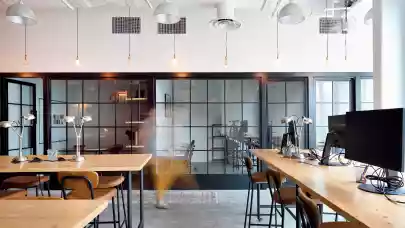
The most active logistics developer in Hungary plans to expand its portfolio by 100-150 thousand sqm every ear. Rudolf Nemes, Country Manager of CTP Hungary talked to Property Forum about the ongoing changes on the Hungarian logistics market.
CTP has set ambitious targets for its Hungarian portfolio. How’s the expansion progressing?
Currently, around 100,000 sqm of prime industrial property is under construction at several prime locations throughout the country and our plan is to deliver 150,000 sqm of new space in strategically important locations such as Budapest West, Budapest South, Budapest East and Győr. We aim to become market leaders in 2020 and plan to expand the portfolio in Hungary every year by an additional 100,000-150,000 sqm.
Are you considering entering new locations in Hungary?
Our primary target is to consolidate businesses at current locations, but we are also looking at some potential new locations around Budapest as well as in the countryside.

Rudolf Nemes
Country Manager
CTP Hungary
Are you looking to expand your portfolio through acquisitions? Are there any investment opportunities available on the Hungarian market?
There are only a few investment opportunities that fit our expectations; therefore, we remain consistent in expanding our portfolio through new constructions. We have our own construction team in place which enables us better cost/time control through which we maintain our market advantage.
Logistics developers in the region have started adding additional facilities to their parks to create a better work-life balance for tenants. Do you have any similar plans in Hungary?
One of such improvements is the refurbishment of our head office in Budapest West which will provide creative space to our clients and employees for meetings, events etc.
As a logistics developer, what can you do to be more sustainable?
Since we remain long-term owners of our properties, we build our buildings from such perspective – not short-term profit, but long-term sustainability is in focus. The Hungarian portfolio will be BREEAM certified during the course of 2020. Further plans include the installation of solar panels on roofs and the planting of forests in order to reduce carbon footprint.
What are the main drivers of growth for you? From which sectors are your tenants coming from?
The economic growth has been one of the main drivers in Hungary (5% pa) which has a positive impact on retail-based logistics. We do not intend to increase the share of the automotive industry related businesses within our parks and plan to maintain focus on logistic and distribution service providers.
CTP’s portfolio has developed the most dynamically on the market in the last 2 years and we are the most active industrial developers with close to 0% vacancy rate, which means that CTP’s market share is exponentially increasing. New demand remained stable over the period which we also benefit from.
How are you dealing with high construction costs and a lack of labour? Are there other challenges you have to face on the Hungarian market as a logistics developer?
Having our own construction team in place we have full control of the construction process including design, procurement and construction, which enables us to be efficient on cost and time. Many of our suppliers are non-Hungarian, which means that we manage to keep the increase in construction cost within reasonable frames. Another challenge I see is that during the process of infrastructure development, the public utility suppliers are notably less effective than their regional counterparts.



